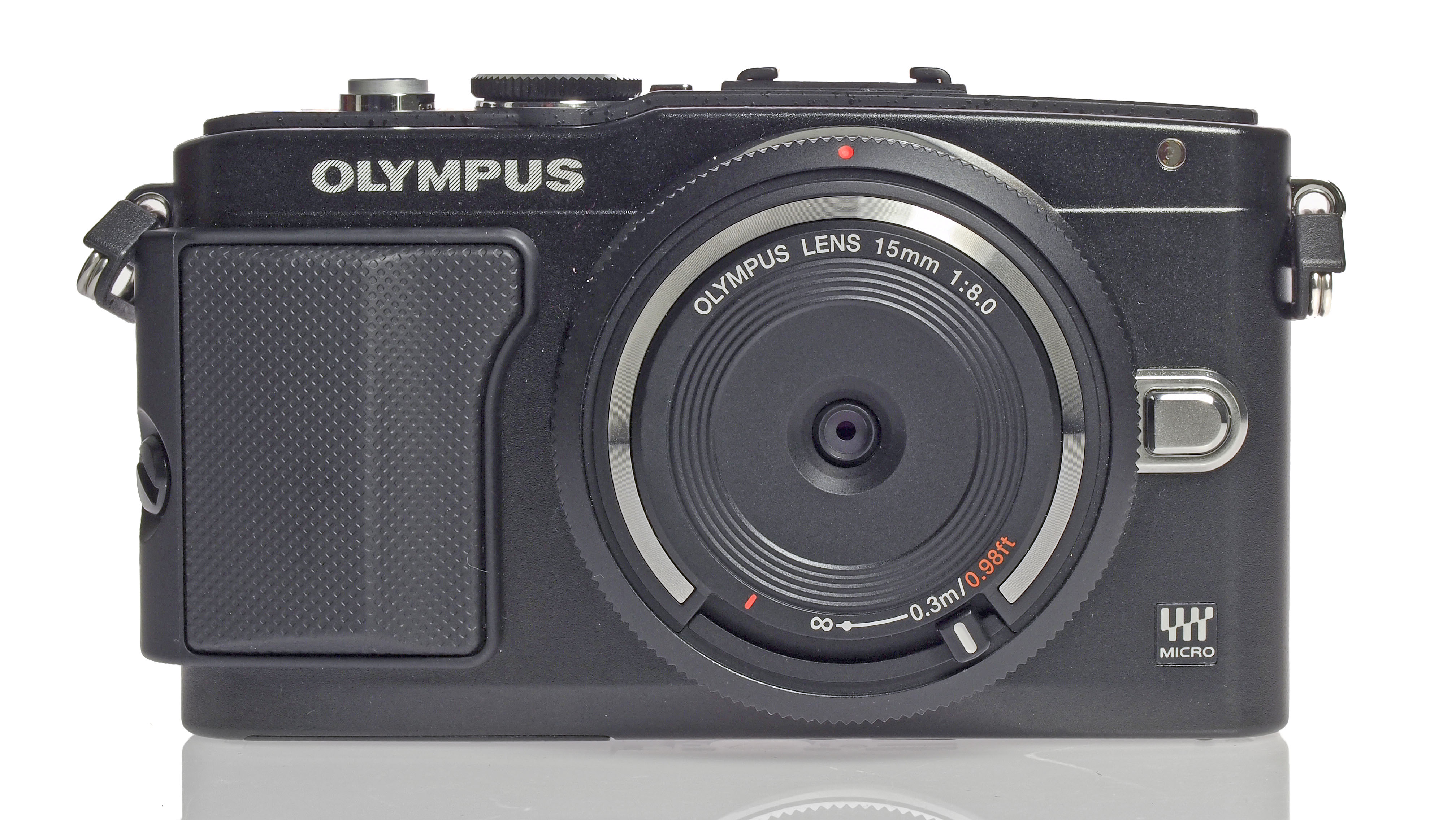Why you can trust TechRadar
We shoot a specially designed chart in carefully controlled conditions and the resulting images are analysed using DXO Analyzer software to generate the data to produce the graphs below.
A high signal to noise ratio (SNR) indicates a cleaner and better quality image.
For more more details on how to interpret our test data, check out our full explanation of our noise and dynamic range tests.
Here we compare the Olympus PEN Lite E-PL5 with the Sony NEX-5R, Panasonic GF5 and Olympus PEN E-PL2.
JPEG signal to noise ratio
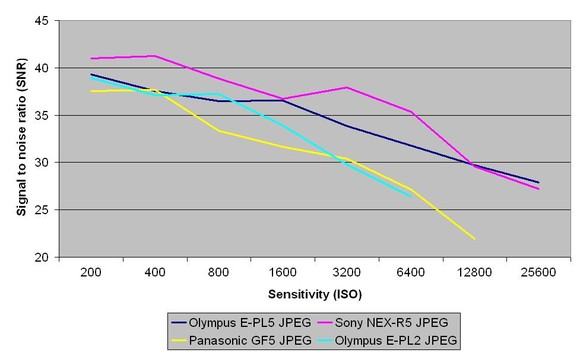
This graph shows that the Olympus PEN Lite E-PL5's JPEG files have a weaker signal to noise ratio than those from the Sony NEX-5R. They produce similar results to those from the Panasonic GF5 and Olympus PEN E-PL2 at lower sensitivities, but after ISO 800 the Olympus E-PL5 beats both cameras.
Raw signal to noise ratio
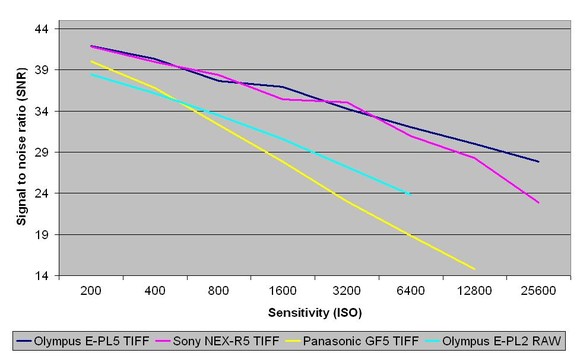
TIFF images (after conversion from raw) from the Olympus PEN Lite E-PL5 have a very similar signal to noise ratio to those from the Sony NEX-5R, from sensitivities of ISO 200-3200, after which the Olympus surges ahead. The Olympus E-PL5 beats the Panasonic GF5 and Olympus PEN E-PL2's results at every setting.
JPEG dynamic range
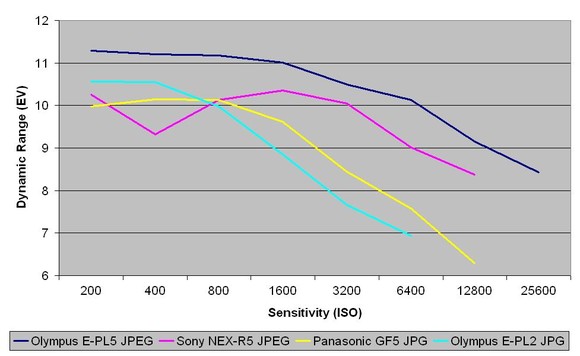
JPEG results for dynamic range are more spread out than those for signal to noise ratio, with the Olympus PEN Lite E-PL5's images showing a more impressive ratio than those from the Sony NEX-5R, Panasonic GF5 andOlympus PEN E-PL2.
Raw dynamic range
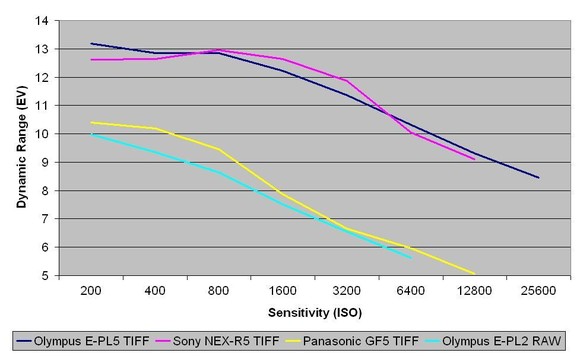
The Olympus PEN Lite E-PL5's TIFF images (after conversion from raw) again have a similar signal to noise ratio to those from the Sony NEX-5R, with the two cameras staying within a hair's width of each other at every sensitivity setting. The Panasonic GF5 is the next most impressive performer, but is a long way off the other two cameras, and the Olympus PEN E-PL2 is the weakest performer here.
Current page: Noise and dynamic range
Prev Page Image quality and resolution Next Page Sample imagesAmy has been writing about cameras, photography and associated tech since 2009. Amy was once part of the photography testing team for Future Publishing working across TechRadar, Digital Camera, PhotoPlus, N Photo and Photography Week. For her photography, she has won awards and has been exhibited. She often partakes in unusual projects - including one intense year where she used a different camera every single day. Amy is currently the Features Editor at Amateur Photographer magazine, and in her increasingly little spare time works across a number of high-profile publications including Wired, Stuff, Digital Camera World, Expert Reviews, and just a little off-tangent, PetsRadar.
